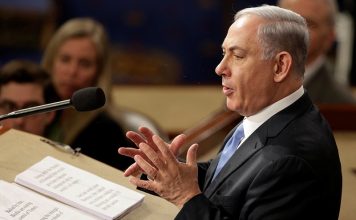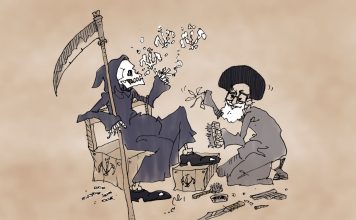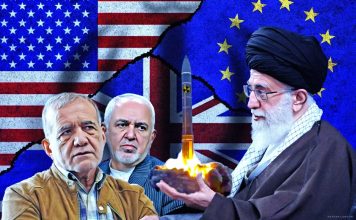
By Sanam Mahoozi
Sept 29 (Thomson Reuters Foundation) – Saeed Souzangar, who runs a technology company in Tehran, is adept at navigating frequent internet disruptions to ensure his business can keep operating, but even he has been thrown by nationwide communications outages this month.
The death of Mahsa Amini, a 22-year-old woman who died in custody after being arrested by the country’s morality police, has triggered the biggest street protests in years, prompting a sweeping security crackdown and curbs on internet and phones.
EXCLUSIVE: Iranian Protesters Speak Out in Interviews With Kayhan Life
“This is the worst internet shutdown we have had in three years. It’s absolute chaos; nothing works,” said Souzangar, 34, via a chat message.
“I can’t do my job, I can’t talk to my loved ones, I can’t even do a simple bank transaction on my phone.”
When people took to the streets on Sept. 16, authorities cut off mobile data and blocked social media platforms Instagram and WhatsApp in several provinces, digital rights group Access Now said. As protests expanded, mobile internet shutdowns spread across the country, with even the domestic internet disrupted.
The communications minister said last week “temporary” disruptions in some places and at some hours had been resolved.
Iran was one of the countries with the highest number of internet shutdowns last year, with authorities pulling the plug to clamp down on dissent, during local elections, and to hide alleged violence against protesters, human rights groups say.
In May this year, internet and mobile internet speeds were slowed in the southwestern province of Khuzestan, and there were similar disruptions across the country amid protests over rising food prices, according to internet monitoring group NetBlocks.
As security forces used teargas and fired warning shots to disperse crowds and arrested protesters, the near-total shutdown made it hard to post images and videos of the violence, said digital rights activists.
It is part of a clear government strategy, said Amir Rashidi, director of digital rights at Texas-based Miaan Group, which supports human rights activists in Iran.
“First, they want to stop protesters from communicating with each other and second, they want to stop them from sending evidence and images of these violations to the outside world,” he told the Thomson Reuters Foundation.
[aesop_image img=”https://kayhanlife.com/wp-content/uploads/2022/09/tehran.jpeg” panorama=”off” credit=”Tehran, Iran. 19/09/22 – KL./” align=”center” lightbox=”on” captionsrc=”custom” captionposition=”left” revealfx=”off” overlay_revealfx=”off”]
Iranian State-Organised Marchers Call for Execution of Protesters
HIDE TRUE SCALE
Around the world, internet shutdowns have become more sophisticated, lasting longer, harming people and the economy, and targeting vulnerable groups worldwide, according to Access Now.
It recorded some 182 internet shutdowns in 34 countries last year, up from 159 shutdowns in 29 nations the previous year.
Iran has had about a dozen shutdowns lasting from 15 minutes to 12 days since December 2018, found the #KeepItOn coalition that campaigns against outages worldwide.
When authorities shut off the internet for 12 days during protests against fuel price increases in November 2019 – its longest nationwide shutdown to date – they hid the “true scale of killings by security forces”, Amnesty International said.
About 1,500 people were killed by security forces during that time, a Reuters investigation showed, when only the country’s tightly controlled domestic internet was operating.
Iranian authorities have not responded to the allegations of unlawful killings, blaming foreign interference and separatist elements for the protests.
The #Iranian Revolution today:#Mahsa_Amini #مهسا_امینی #IranRevolution2022
1. Less videos are coming in due to the internet shutdown
2. But the revolution continues
3. Several major groups have announced strikes, including oil workers & the Bakhtiari tribes
4. Khamenei has— Alireza Nader علیرضا نادر (@AlirezaNader) September 29, 2022
SAFE SEARCH ONLY
Iran‘s domestic intranet, the National Information Network, blocks most global social media sites and messaging apps including Facebook, Twitter, YouTube, Telegram, and Signal, and identifies users by their phone numbers and IDs.
Authorities routinely jam signals to block all but state-approved broadcasts, and redirect users to false destinations – a process known as domain name system hijacking, digital rights campaigners said.
A more recent step saw them enable Google and Bing’s safe search mode – usually set for children to filter explicit content – for all Iranians.
“The safe search assumes that Iran‘s entire population is under 13, and the parent is apparently the Supreme Leader,” said Amin Sabeti, the London-based founder of CERTFA, a cybersecurity lab focussing on cyberattacks by Iran, referring to Ayatollah Ali Khamenei, the head of state and highest religious authority.
But even tougher controls are in the pipeline for the nation of 84 million people.
A draft internet protection bill proposes to limit international internet services, criminalise the use of virtual private networks (VPNs), and put internet infrastructure and internet gateways under the control of the armed forces and security agencies.
U.N. human rights experts have said the bill – which is awaiting approval in parliament – is a “worrying step towards the consolidation of a digital wall in Iran.”
The shutdowns and disruptions cost the economy nearly $28 million last year, according to Top10VPN, an internet freedom advocacy group.
For Iranians who run businesses, they are a huge headache. Fashion designer Sarah logs into a VPN before uploading pictures of her latest creations and swapping messages with potential buyers on Instagram.
Iran’s Internet Rights and Freedoms ‘In Deep Freeze,’ Netblocks Founder Says
Many Iranians rely on VPNs to access global sites, communicate with the outside world or hide their online identities – something that could be made a crime under the new bill.
Even now, VPNs are an imperfect workaround, and sporadic connectivity slowdowns mean users often struggle to connect.
“I have to waste hours of my time and so much energy every day just trying to connect to the internet,” said Sarah, 32, asking not to use her full name.
“Designers around the world can sell their work online easily. On days that the internet is slow or down, I don’t make a sale – it’s a big loss,” she said.
Adding to their difficulties, Iranian internet service providers raised prices by 30%-100% earlier this year due to brisk inflation – hiking businesses’ running costs and leaving many households unable to afford a connection.
Last week, U.S. officials issued guidance expanding the range of internet services available to Iranians despite U.S. sanctions, while SpaceX Chief Executive Elon Musk said he would activate the firm’s satellite internet service for Iran.
Still, these steps cannot get everyone online.
“There is no easy solution for bypassing internet shutdowns for ordinary people,” said Rashidi.
As the internet bill awaits approval and disruptions continue, Sabeti said the government appeared determined to tighten its grip.
“Ultimately, the aim is to control as much of the information flow as they can,” he said. “The internet is dead in Iran.”
Originally published on: https://www.context.news/surveillance/irans-digital-wall-casts-chill-over-protests-the-economy
(Reporting by Sanam Mahoozi in London; Editing by Rina Chandran and Helen Popper. The Thomson Reuters Foundation is the charitable arm of Thomson Reuters. Visit https://context.news/)









